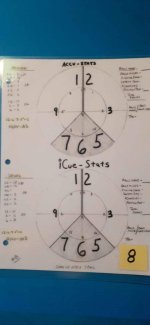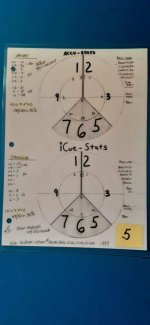On the predator spot shot format, was there a single player that played that BIH shot on the vertical centerline? Vertical centerline hits are for straight in shots. That's about it. Some specific cut shots where you hit them with speed to go back and forth straight across the table work with center ball, but they must be struck with speed. Although even many of those will need a hair of inside depending on the cut angle. Slow roll is death with center ball.
90% of cut shots will have side spin on them. Straight in shots are mostly vertical centerline. But very few straight in shots exist during a game compared to cut shots.
90% of cut shots will have side spin on them. Straight in shots are mostly vertical centerline. But very few straight in shots exist during a game compared to cut shots.
Last edited:


